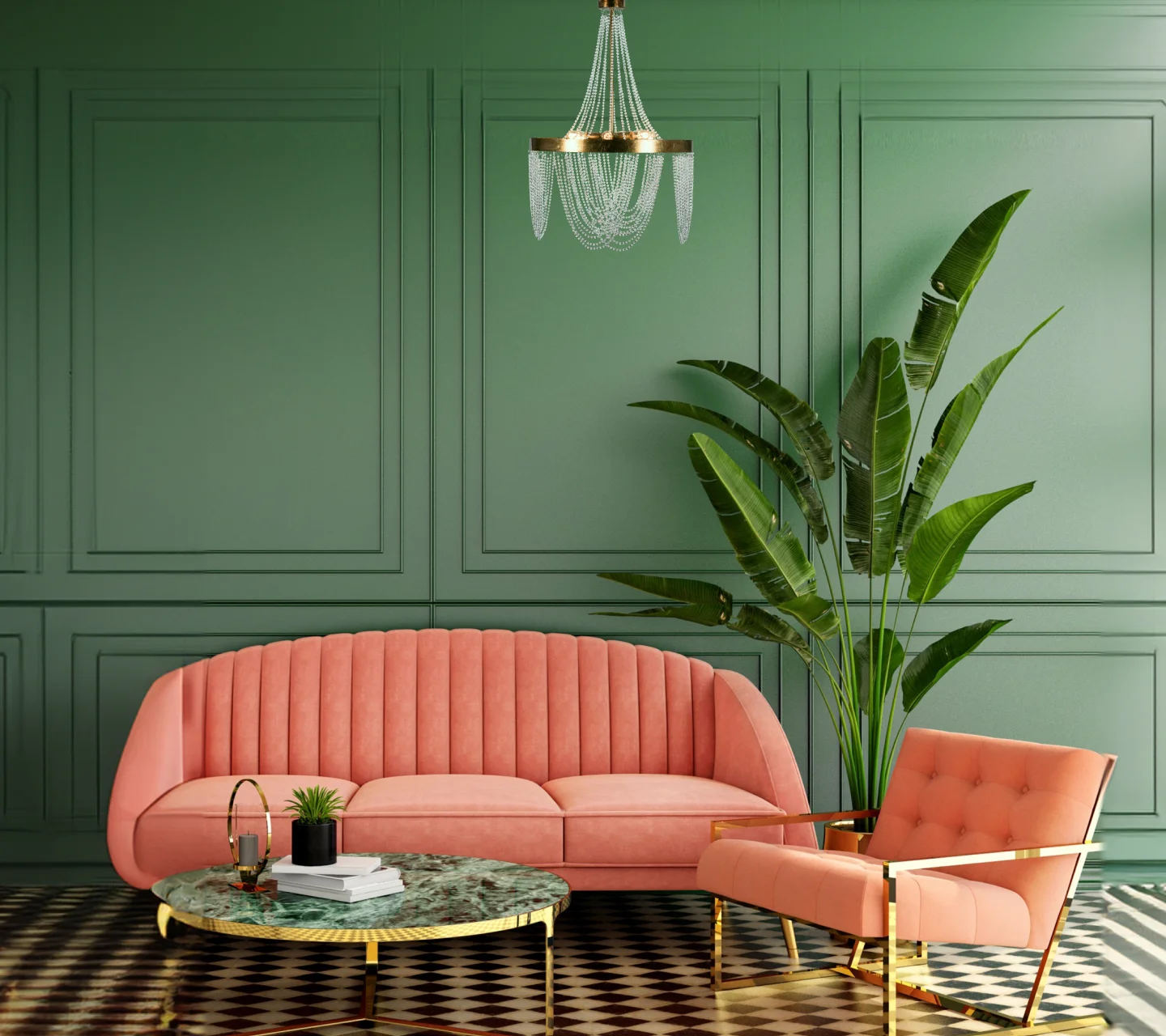TRENDING
Home decor tips
Interior design
How Tufted Upholstery Can Bring Dramatic Flair to Your Interior: A Comprehensive Guide
You’ve probably seen tufted upholstery on sofas, chairs and headboards many times. You’ve also probably absent-mindedly played with the buttons or run your fingers along the stitching. Tufting adds layers of visual interest and tactility to furniture and home interior décor, but it also serves a more functional purpose. With this guide on tufted upholstery, we explore the benefits, uses and different techniques of tufting that you can choose from. Read on for interior décor ideas to enhance your plain, old upholstery.

WHAT IS TUFTING?
First, let’s start with what tufting actually is. Tufting originated in Victorian England around the 1800s. It was done to secure the furniture padding from shifting. Essentially, tufting is a kind of fabric treatment where the top upholstery and underlying layers of filling are tightly stitched using different techniques, resulting in a series of repeating geometric patterns.

The stitches form indents or dimples that are evenly positioned and form a uniform pattern. This creates raised sections of fabric called tufts. Sometimes, these depressions are secured with a button, knot or ribbon, or even left bare.
BENEFITS OF TUFTING?
Tufting adds texture and dimension to furniture. It lends a plush, luxe look and feel to your home interior décor. Apart from aesthetics and appearance, tufting also has practical uses. For starters, the cushioned tufts make these pieces more comfortable to sit on or lay against.

Additionally, each technique involves reinforcing the fabric every few inches—resulting in less sagging and increases longevity of the furniture.
WHERE CAN YOU USE TUFTING?

The most common furniture pieces for tufting are seating in the living and dining areas like sofas, armchairs and dining chairs. Tufting can be done on a variety of upholstery materials including cotton, polyester, velvet, linen, leatherette and pure leather. Tufting greatly increases the comfort level and durability of seating furniture.

You can also tuft headboards, bed benches, poufs and ottomans to elevate your bedroom décor. You can experiment with different tufting patterns and techniques or even blend two to create unique designs in your bedroom. Additionally, adding a few tufted pillows or cushions to your rooms works wonders in enhancing that luxe appeal. Finally, you can get creative with tufted, upholstered wall panels for an accent wall or even wardrobe shutters.
DIFFERENT TYPES OF TUFTING
There are a few different techniques used to create an interesting tufted look, each resulting in different patterns or styles. Each technique lends itself well to different décor styles from a more vintage look to a clean, modern design. Here are the five most common techniques used in tufting.

TUFTING BASED ON PATTERN
Diamond tuffing
One of the oldest and most popular tufting techniques is diamond tufting. As the name suggests, the resulting pattern is of repeating diamonds formed by pulling and securing the upholstery fabric. This technique also results in very comfortable furniture to sit on or lay against because of the extra cushioning in each diamond-shaped tuft.

One can make it more formal by adding pleated folds or seamed panels that enhance the diamond pattern. With an elegant and timeless appeal, this technique is great for living rooms and dining rooms or even soft, vintage-inspired home interior décor. For an extra luxurious effect, use a rich fabric like velvet or silk for the upholstery.
Biscuit or Bun tufting
Biscuit or bun tufting is a more recent technique; the stitching forms a uniform and repeating square or rectangular tufts of about eight to ten inches each.

Depending on your tastes, the dimples can vary from deep to quite shallow. It lends a contemporary look to furniture and works very well with a mid-century aesthetic.
Channel tufting
This technique features rows of lines or seams instead of indentations. The tufting pattern involves repeating stitched lines, either vertical or horizontal, where the padding fills a long channel between two lines of stitching

This style works perfectly for minimal and modern aesthetic but can also be used in art deco and mid-century home interior décor. When used on items like a high headboard, vertical channel tufting draws the eyes upward and gives the illusion of higher ceilings.
TUFTING BASED ON STICHTING
Blind tufting
Blind tufting can result in any pattern; however, the technique describes the style of stitching where one cannot see what is holding the tufting in place. A small stitch is used to pull back the fabric which is then secured with a tiny knot. Different spacing, patterns and the number of tufts are used to create a variety of designs. The resulting look is clean and minimal luxe without any visible accents.

This style works perfectly for minimal and modern aesthetic but can also be used in art deco and mid-century home interior décor. When used on items like a high headboard, vertical channel tufting draws the eyes upward and gives the illusion of higher ceilings.
Button tufting
Finally, like blind tufting, button tufting isn’t about the resulting pattern, rather the stitching technique. It features a button in the pit of each dimple that anchors the stitch in place. There is no set button size and they are usually fabric-covered buttons that match the upholstery fabric.

However, contrasting colours and/or materials can be used to infuse visual interest and add layers of texture. It lends a regal and stately appeal, perfect of formal areas and traditional-inspired home interior décor.
LIKE THIS ARTICLE
Give us a thumbs up!

TEXTURE FINISH












